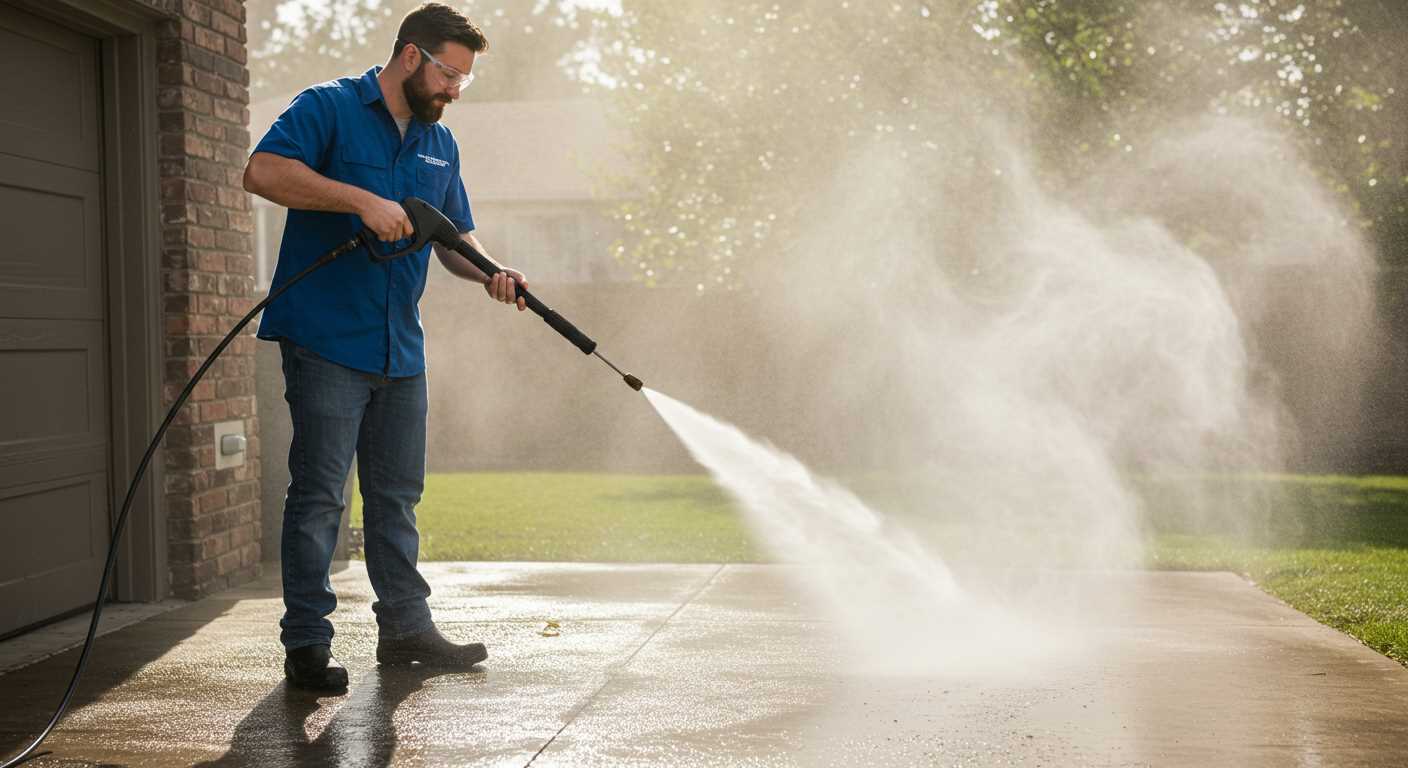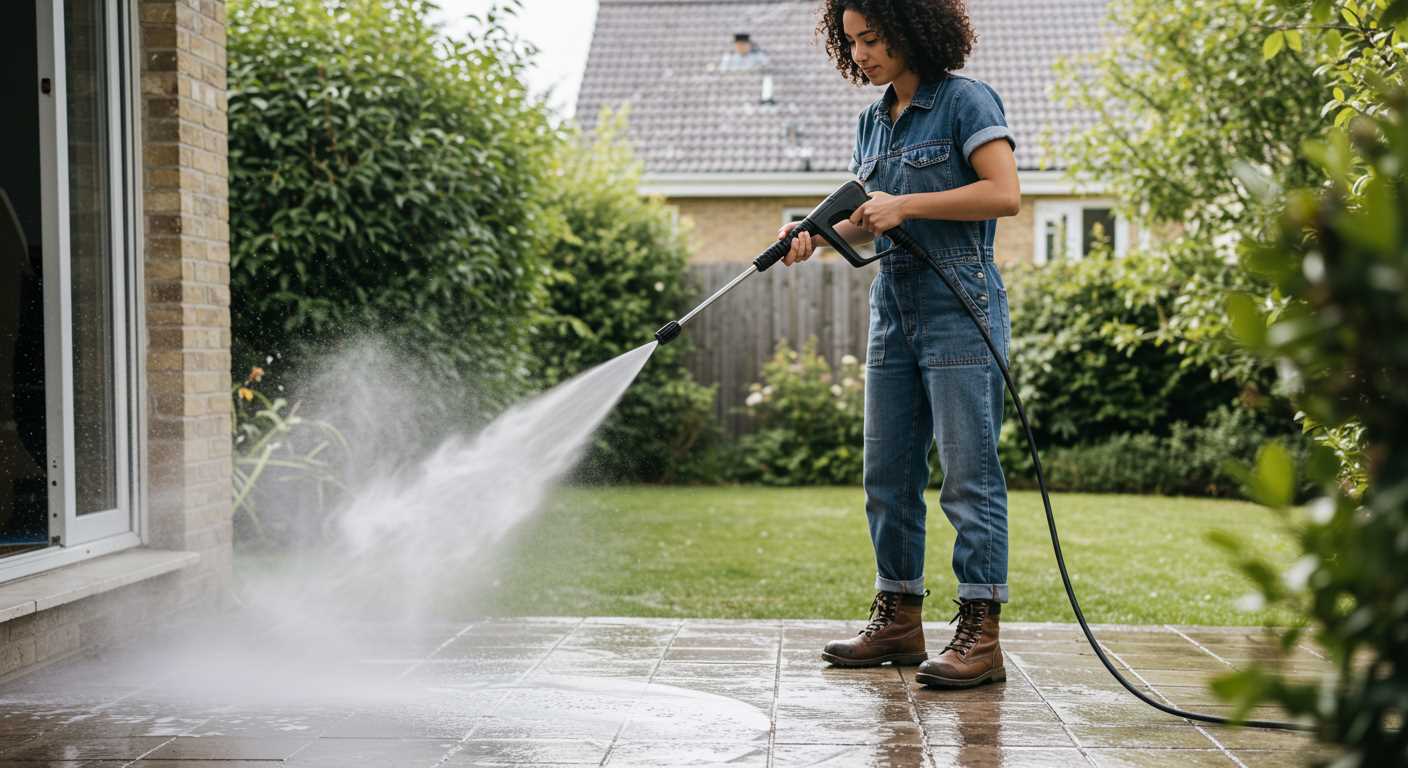



To restore a consistent water flow, ensure the inlet filter is clean. Debris accumulation can obstruct water intake, leading to erratic performance. Disconnect the unit, locate the filter, and remove any build-up using water and a soft brush. This simple maintenance task can significantly improve operation.
Next, examine the hose for kinks or blockages. Often, a pinched hose can create resistance, causing the motor to pulse as it struggles to maintain pressure. Lay the hose flat and inspect for visible damage or obstructions.
If issues persist, check the pressure nozzle. A worn or clogged nozzle can distort the water stream. Replace the nozzle if it appears damaged or clean it thoroughly with a suitable solution to remove any deposits. Regular replacement of nozzles helps maintain optimal performance.
Evaluate the connections throughout the apparatus. Loose or damaged fittings can contribute to a loss of pressure. Tighten any loose parts and replace any damaged components to ensure a tight seal and consistent water flow.
Lastly, listen for unusual sounds coming from the motor. Unusual noises may indicate internal issues that require further investigation. Ensuring all moving parts are properly lubricated can also prevent potential malfunctions.
Addressing Fluctuations in Water Flow
First, check your inlet filter. Remove the filter from the hose connection and inspect it for debris. Clean it thoroughly with water; a clogged filter can restrict flow and create inconsistency in pressure.
Next, examine the nozzle. Swap in a different nozzle to see if the current one is causing the irregular flow. A blocked or damaged nozzle impedes water delivery, resulting in fluctuations. If necessary, clean or replace the nozzle.
Inspect the hose for kinks or damage. A compromised hose can lead to pressure variances. Ensure it’s fully extended and free from any obstructions. If you notice wear, consider replacing the hose to maintain a steady performance.
Evaluate the pump. Look for signs of water leaks or unusual noises that might indicate malfunction. Ensure that the pump’s intake is submerged properly while in operation. Lack of adequate water supply impacts pressure consistency.
Check the water supply. Ensure your source provides ample pressure and flow. If you’re using a long hose, it may cause a reduction in pressure, so experiment with a shorter hose to see if flow improves.
Lastly, inspect the detergent injector, if applicable. A clogged injector restricts flow and may cause fluctuations. Clean it or bypass it if it’s not being used for your current task. A steady mixture ensures proper operation without unwanted interruptions.
Identify the Cause of Pressure Fluctuations
Begin with the water supply. Ensure a consistent flow from the source without any restrictions. A partially closed valve or a clogged hose can significantly affect the performance of your equipment.
Check for Blockages
- Inspect the inlet filter; it should be free from debris. Clean or replace it as required.
- Examine the nozzle for any obstructions that might impede water flow.
- Ensure hoses are not kinked or pinched, as this can disrupt water delivery.
Assess the Pump Functionality
- Listen for unusual sounds during operation, which could indicate wear or damage.
- Check for leaks around the pump body; even minor leaks can lead to inconsistencies in operation.
- Confirm the pump’s pressure settings are correct and within the manufacturer’s specifications.
Evaluate the performance of the spray gun and nozzle setup. If they do not match the machine’s specifications, this can lead to unstable operation. The compatibility of these components is key for optimal functioning.
Lastly, consider the temperature of the water being used. Heated water can change the viscosity and flow characteristics, so ensure it matches what’s recommended by the manufacturer for best results.
Check for Blockages in the Nozzle and Hose
Inspect the nozzle for any debris or mineral build-up. A specialist cleaner or a thin wire can help clear any clogs. Make sure to test the nozzle’s spray pattern after cleaning to ensure it’s functioning correctly.
Examine the hose for kinks, bends, or obstructions. A blocked hose can significantly reduce fluid flow to the unit, causing irregular performance. If you find any issues, remove the hose and check for internal blockages using water or a flexible cleaning rod.
Ensure all connections are secure. A loose joint can lead to leaking, which might mimic performance issues. Tighten any loose fittings and check for wear and tear on seals, replacing them if necessary.
Finally, flush the system periodically with clean water before and after use. This simple maintenance task helps prevent build-up and prolongs the life of your equipment. Regularly inspecting these components can help maintain consistent operation and enhance cleaning efficiency.
Inspect the water supply for adequate flow
Verify that the water source provides sufficient volume. A consistent flow rate is crucial for optimal operation. To assess this, connect a standard garden hose to the supply and turn on the tap fully. If the water streams out freely without noticeable drops in pressure, the supply is adequate.
Examine the hose for kinks or constrictions that might impede flow. If any are present, straighten the hose to restore maximum capacity. Ensure the hose’s diameter matches the specifications required for your unit; using a thinner hose may restrict water flow significantly.
Check the inlet screen of the pressure apparatus for any debris or mineral build-up. Rinse it thoroughly to eliminate blockages. If the system connects to a water tank, ensure the tank is not nearly empty, as low water levels can lead to insufficient supply pressure.
If you have access to a flow meter, consider measuring the output from the water source. Ideally, the flow rate should meet or exceed the recommended specifications for your cleaning device, typically noted in the user manual. If the flow rate falls short, consult with a plumber or consider alterations to the plumbing setup.
Lastly, consider potential issues within the municipal water system or nearby construction that could affect supply, especially during peak usage times. Awareness of external factors can provide insight into any variability in water flow that impacts performance.
Examine the Pump for Wear and Damage

Inspect the pump casing for any visible cracks or signs of wear. Pay close attention to the housing, especially around the inlet and outlet ports where stress can occur. Look for any corrosion that might indicate water intrusion.
Check the Seals and Gaskets

- Remove the pump cover and examine the seals and gaskets for deterioration. These components can wear out over time and lead to pressure inconsistencies.
- Replace any seals that appear brittle or deformed, ensuring a snug fit to prevent leaks.
Assess the Pistons and Valves
Internal components like pistons and valves also play a crucial role in maintaining consistent output.
- Inspect the pistons for scoring or excessive wear. A damaged piston can lead to reduced performance.
- Check the valves for proper seating; they should open and close smoothly without sticking.
If any components show significant damage or wear, consider replacement to restore optimal functionality. Regular maintenance can prolong the life of the unit and prevent future issues.
Adjust the Pressure Settings Correctly
To achieve optimal performance, adjust the pressure settings according to the task at hand. Locate the pressure control dial or knob on your unit. Turn it to find the right setting for the surface you are cleaning; lower settings work well for delicate surfaces, while higher settings are suitable for tough grime and dirt.
Utilise the Right Nozzle
.jpg)
Select the appropriate nozzle size as it directly influences the water output pressure. For example, a narrow nozzle typically delivers a concentrated stream, increasing pressure, making it ideal for stubborn stains. Conversely, a wider nozzle disperses water over a larger area, reducing pressure and protecting fragile surfaces.
Monitor Water Temperature
Ensure that the water temperature is suitable. Cold water is typically adequate for general cleaning, while hot water can enhance cleaning power for oil and grease. However, check the manufacturer’s recommendations for the pressure-cleaning machine, as excessive heat can damage internal components.
Perform Regular Maintenance to Prevent Issues
Regular maintenance is fundamental to ensuring optimal operation of your cleaning unit. I recommend creating a schedule to check and service your equipment every few months, depending on frequency of use.
Maintenance Checklist
| Task | Frequency | Details |
|---|---|---|
| Inspect filters | Every month | Clean or replace filters to ensure proper water flow and prevent clogs. |
| Check hoses | Every three months | Look for signs of wear, cracks, or leaks; replace if damaged. |
| Examine seals and O-rings | Every six months | Replace worn or damaged seals to prevent leaks that can cause pressure drops. |
| Clear nozzle openings | Monthly | Ensure no debris is obstructing the spray pattern for efficient cleaning. |
| Flush the unit | After each use | Run clean water through the system to remove soap residue and contaminants. |
Proper storage is also crucial; avoid leaving the unit outside exposed to moisture and extreme temperatures. Make sure to store it upright and drained of any remaining liquid to prevent internal damage.
Finally, keep the manufacturer’s manual handy for specific instructions related to your model. Following these maintenance practices will extend the lifespan of your appliance and enhance its overall performance.










